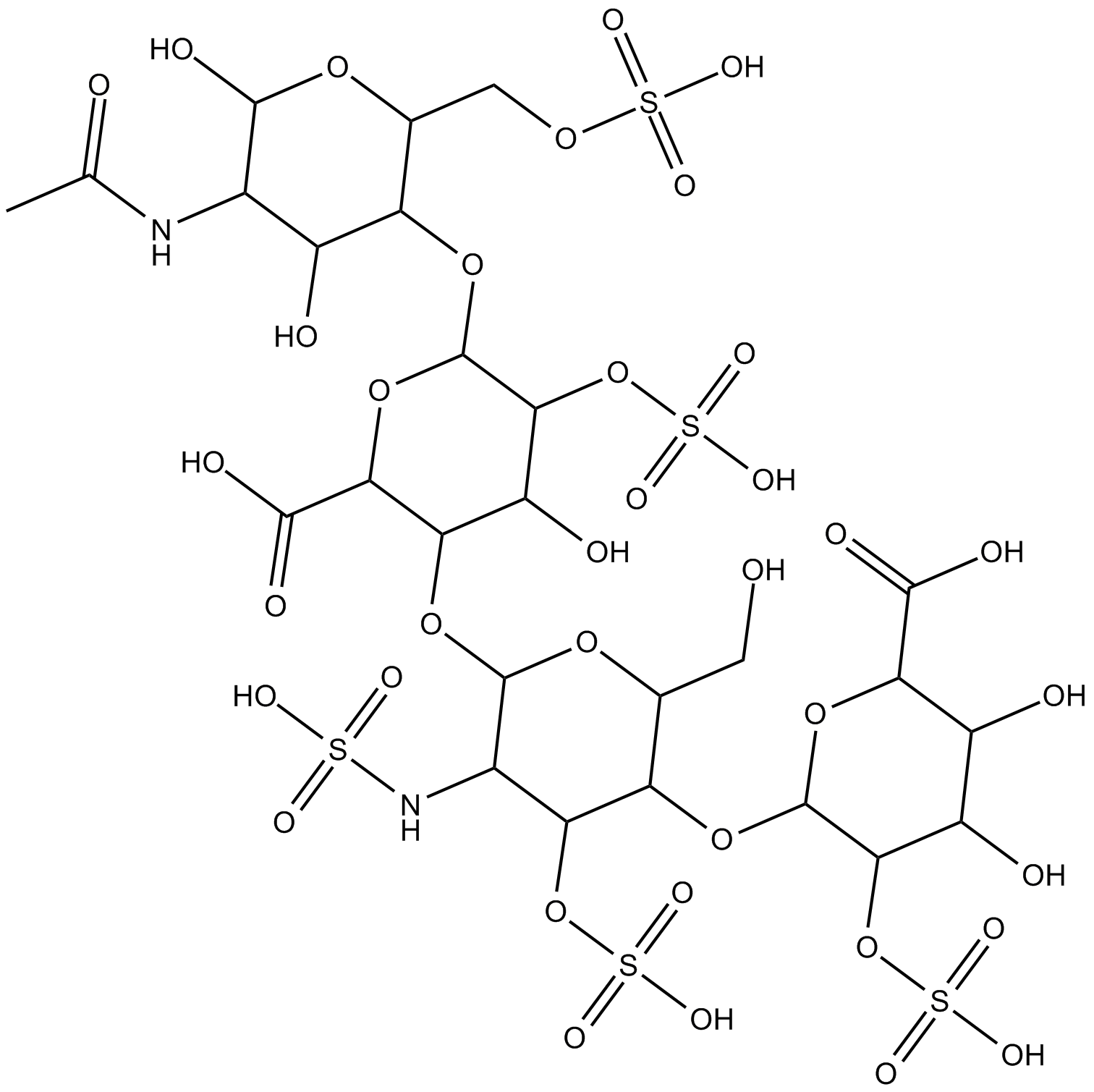Heparin |
| Catalog No.GC10829 |
injectable anticoagulant
Products are for research use only. Not for human use. We do not sell to patients.

Cas No.: 9005-49-6
Sample solution is provided at 25 µL, 10mM.
Heparin, a highly sulfated glycosaminoglycan, has been widely used as an injectable anticoagulant. Heparin is present only in a few tissues and species of the animal kingdom and in the form of granules inside organelles in the cytoplasm of special cells. Heparin might be involved in defense mechanisms against bacteria and other foreign materials [1].
In vitro: Heparin (25-500 Nμ/ml) dose-dependently inhibited cellular aggregation and degranulation induced either by FMLP or by zymosan-activated serum. Heparin at the concentration of25 μg/ml specifically inhibited FMLP-dependent superoxide anion generation and chemiluminescence. Heparin inhibited all the aspects of the functional and metabolic granulocyte activation [2].
In vivo: In the cells from heparin-treated rats or in the heparin-treated cells, specific binding of [125I]iodo-angiotensin II was decreased due to a decrease in both the number and the affinity of angiotensin II receptors. Heparin also decreased the maximum angiotensin Il-induced productionof aldosterone in the cells from heparin-treated rats and in the heparin-treated cells. Heparin interacted with adrenal angiotensin II receptors to inhibit the angiotensin Il-induced aldosterone production [3].
References:
[1]. Nader H B, Chavante S F, Dos-Santos E A, et al. Heparan sulfates and heparins: similar compounds performing the same functions in vertebrates and invertebrates[J]. Brazilian Journal of Medical and Biological Research, 1999, 32(5): 529-538.
[2]. Pasini F L, Pasqui A L, Ceccatelli L, et al. Heparin inhibition of polymorphonuclear leukocyte activation in vitro. A possible pharmacological approach to granulocyte-mediated vascular damage[J]. Thrombosis research, 1984, 35(5): 527-537.
[3]. Azukizawa S, Iwasaki I, Kigoshi T, et al. Effects of heparin treatments in vivo and in vitro on adrenal angiotensin II receptors and angiotensin II-induced aldosterone production in rats[J]. Actaendocrinologica, 1988, 119(3): 367-372.
Average Rating: 5 (Based on Reviews and 10 reference(s) in Google Scholar.)
GLPBIO products are for RESEARCH USE ONLY. Please make sure your review or question is research based.
Required fields are marked with *




















